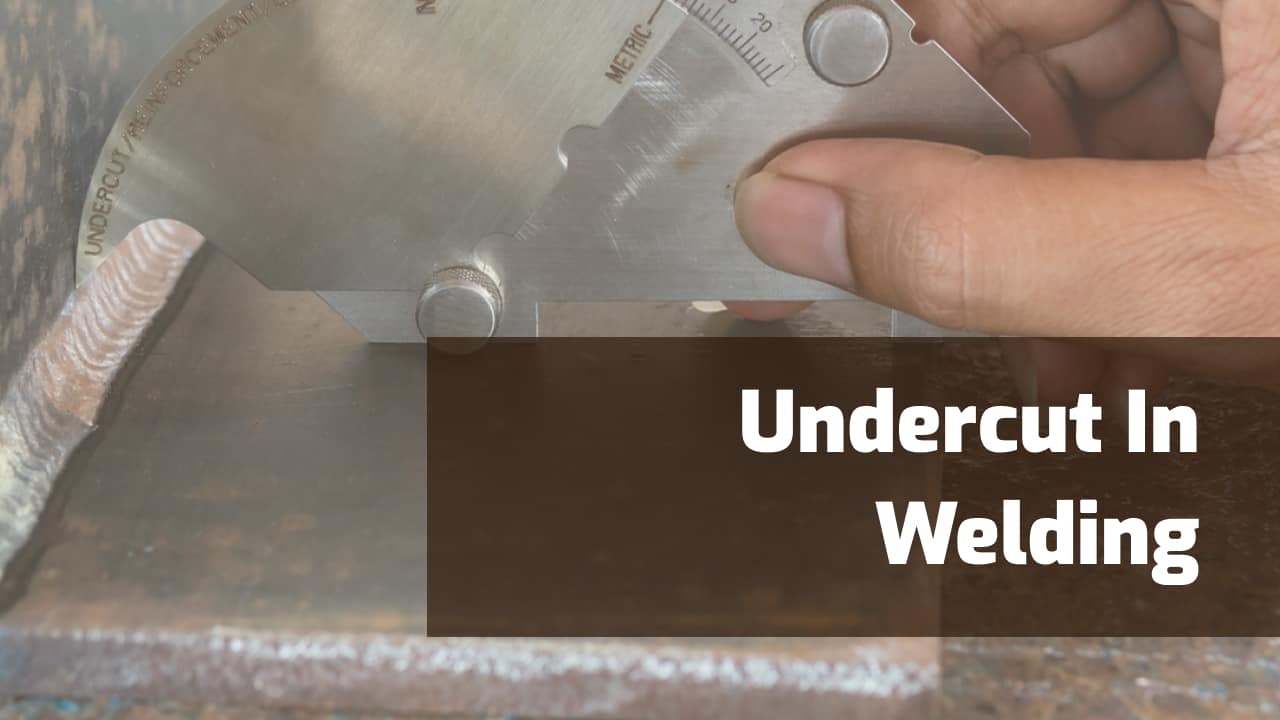Understanding the Causes and Solutions for Undercut Welding in Metal Construction Processes
In the world of metal construction processes, the incident of undercut welding poses a considerable difficulty that demands a thorough understanding of its causes and viable solutions. The complex interplay of different elements throughout welding operations can bring about this unfavorable phenomenon, impacting the structural honesty and overall quality of the bonded joints - Preventing weld undercut. By exploring the origin of undercut welding and discovering efficient therapeutic procedures, makers can elevate the requirement of their craftsmanship and make sure the manufacturing of flawless metal components
Usual Root Causes Of Undercut Welding
Regularly overlooked in steel fabrication, undercut welding occurs due to different factors that demand meticulous interest and knowledge to be properly minimized. In addition, incorrect welding strategies, such as using the incorrect welding angle or travel speed, can likewise contribute to damage formation. The option of welding criteria, such as voltage, current, and wire feed rate, plays a substantial role in the incident of undercut welding.
Influence of Incorrect Welding Parameters
Unreliable welding specifications can substantially jeopardize the honesty and high quality of bonded joints in metal manufacture procedures. The impact of incorrect welding specifications manifests in numerous means, causing architectural weaknesses and flaws in the bonded components. One vital facet impacted by incorrect welding specifications is the penetration depth of the weld. Insufficient heat input because of low welding currents or excessively high traveling rates can cause inadequate blend in between the base steels, leading to insufficient joint infiltration and weakened bonds. On the other hand, too much heat input caused by high welding currents or slow-moving traveling rates can cause too much and burn-through reinforcement, developing a fragile and unsteady weld framework. In addition, inaccurate criteria such as incorrect voltage setups or incorrect electrode angles can contribute to unpredictable weld bead accounts, lack of combination, and increased chances of defects like undercutting. Meticulous interest to welding criteria is critical to make certain the manufacturing of premium welds with the desired mechanical properties and structural honesty.
Effect of Improper Torch Angle
Improper lantern angle in welding procedures can substantially impact the high quality and integrity of the final weld joints in metal construction processes. Undercutting is a typical welding flaw where a groove forms along the weld toe, deteriorating the joint and endangering its architectural integrity.
A lantern angle that is also high can result in insufficient penetration, insufficient fusion, and boosted spatter. On the other hand, a torch angle that is as well shallow can lead to excessive penetration, Get the facts burn-through, and distortion of the base material. Preventing weld undercut. Correct lantern angle is important for guaranteeing constant weld quality, strength, and look
To stop undercutting and various other flaws triggered by incorrect lantern angles, welders have to be educated to preserve the right torch angle throughout the welding process. Regular surveillance and adjustment of lantern angles during welding can assist attain audio welds with very little issues.
Duty of Inadequate Welding Techniques

Another facet of insufficient welding methods is inappropriate weld preparation. Insufficient cleansing of the base metals, incorrect joint design, or not enough edge preparation can all add to damage welding. Moreover, inadequate shielding gas coverage or using the incorrect kind of gas can cause incomplete combination and the formation of undercut issues.
To resolve the duty of inadequate welding strategies in metal manufacture processes, it is necessary to give comprehensive training for welders. Proper education and learning on welding criteria, joint preparation, and protecting gas choice can aid avoid undercut welding and ensure high-quality welds in steel fabrication projects.
Reliable Solutions for Undercut Welding
Resolving undercut welding in steel manufacture needs implementing effective options to enhance weld top quality my explanation and architectural integrity. Among the main options to battle undercut is to change welding parameters such as voltage, existing, and travel speed to make certain appropriate warm input and combination. By fine-tuning these setups, welders can prevent too much melting of the base metal and filler product, minimizing the probability of undercut development.
Furthermore, correct joint prep work is critical in protecting against undercut. Making sure clean base steel surface areas without contaminants and using the ideal bevel angle can assist advertise far better weld penetration and reduce the risk of undercut - Preventing weld undercut. Utilizing ideal welding strategies, such as oscillating the torch or weaving, can also help in distributing warm equally and loading the weld joint adequately, reducing the possibility of undercut flaws
Additionally, choosing the appropriate welding consumables, including electrodes and filler steels, is essential in reducing undercut. Using products with suitable chemical compositions and mechanical Full Report residential properties can add to achieving audio welds with minimal undercut. Regular assessment and quality control procedures ought to additionally be applied to find and resolve undercut concerns quickly, guaranteeing the overall integrity of produced metal elements.

Conclusion
In final thought, recognizing the reasons and remedies for undercut welding in steel fabrication processes is essential for accomplishing premium welds. By dealing with usual reasons such as inaccurate welding criteria, incorrect lantern angle, and poor welding techniques, welders can avoid undercutting and make certain solid, resilient welds. It is essential to take notice of these aspects and apply reliable remedies to enhance the overall welding process and end product high quality.

Comments on “Ultimate Guide to Preventing Weld Undercut: Tips and Techniques”